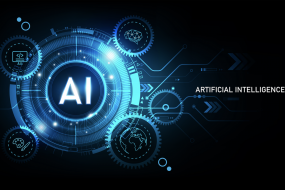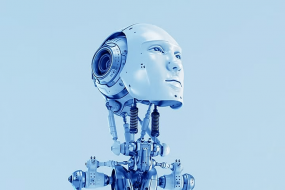
Generative artificial intelligence (AI) is a rising era that can revolutionize many industries. Through generative AI, machines can analyze patterns in information and use what they’ve discovered to generate new, sensible content material. However, for many people, generative AI remains a difficult concept. This complete novice’s manual aims to explain what generative AI is, how it works, the distinct fashions used, not unusual applications, blessings, and limitations. By the end, you may have strong information about this fascinating new technology and how it’s shaping our future.
What is Generative AI?
Generative AI refers to a department of synthetic intelligence that is centered on producing new content inclusive of text, pix, audio, and videos in preference to simply appearing responsibilities with pre-present content. While everyday AI structures are commonly engaged in class and prediction tasks, generative AI leverages gadget-studying algorithms to find out patterns in big quantities of information after which uses the one’s patterns to generate new, artificial content that appears credible.
The key goal of generative AI is to permit machines to study the underlying structures and styles found in big amounts of information after which use that getting to know to synthesize new examples that appear authentic and manageable despite being artificial or fake. In other words, generative AI structures study the essences and intricacies of precise datasets and use that perception to provide custom-designed, fabricated content material that would bypass as original to human observers.
A Brief History Of Generative AI
While generative AI models have advanced unexpectedly in recent years, the concept has been around since the reason that early days of artificial intelligence studies. One of the first hit generative fashions turned into evolved in 1955 by way of Russian mathematician Anthropic to generate random chess positions. However, principal breakthroughs happened in the 2000s with the emergence of Latent Dirichlet Allocation (LDA), a set of rules for topic modeling, and Deep Belief Networks that might examine styles in categorized statistics.
In 2014, researchers at the University of Toronto introduced Generative Adversarial Networks (GANs) that sparked the hobby of generative modeling through competition. Subsequently, advanced models like Variational Autoencoders, Autoregressive Networks, and Flow-based total models pushed the bounds. Today, OPENAI, DeepMind, Anthropic, and different AI labs are actively exploring generative AI to engineer solutions like text generation, photosynthesis, drug layout, and more.
Generative AI Models
Here are the key generative AI models:
Generative Adversarial Networks (GANs): GANs comprise a generator and discriminator network that compete against each other. The generator learns to output fake samples resembling real data to fool the discriminator, while the discriminator learns to distinguish real from fake. This adversarial game helps GANs generate sharp, highly realistic outputs.
Variational Autoencoders (VAEs): VAEs are probabilistic models that learn the latent space of data through encoding and decoding. They encode a data point into a lower-dimension latent vector from which the data can be reconstructed. VAEs can generate new data by sampling random vectors from the latent space learned from the data.
Autoregressive models: These sequential models predict the next data point conditioned on all previous ones. Each token/pixel relies on the previously generated ones. Examples include RNNs and Transformers. They are widely adopted for text/audio generation by modeling the conditional probabilities.
Flow-based models: Inspired by probability flows, these models connect simple source distributions to complex target distributions through a chain of invertible transformations. They allow exact log-likelihood computation and sampling from the target distribution.
Rule-based models: Instead of learning patterns implicitly, these models explicitly implement rules, grammar, or parameters to synthesize outputs like text. They program logic for generation rather than learning from huge datasets.
What is Generative AI used for?
Here are Generative AI used for:
Finance Industry: Generative AI is used to generate realistic financial documents like loan agreements, mortgages, etc. It can also synthesize new text based on financial data to help detect fraud and for robo-advisory services.
Legal Industry: Law firms use it to draft basic legal documents faster. It summarizes depositions, creates court briefings from case law, and analyzes contracts to provide draft clauses. Generative AI also assists in legal research.
Manufacturing Industry: It speeds up the product design process by rapidly generating concepts based on design specifications. Manufacturers test virtual prototypes before production. Generative AI aids in scheduling, streamlining supply chains, and demand forecasting too.
Media Industry: Content creators leverage it to produce news articles, website content, social media posts, etc. at scale. It’s also used for video/image editing, digital art, graphic designing, music/podcast making, and subtitle/caption generation.
Healthcare Industry: Doctors employ it to propose diagnoses, and treatment plans and perform administrative tasks. Researchers use it to accelerate drug discovery and precision medicine efforts by analyzing huge patient databases for new insights.
What are the Benefits of Generative AI?
Here are the benefits of Generative AI:
Better Efficiency and Productivity
Generative AI can substantially enhance performance and productiveness for corporations. Once educated on huge quantities of records, generative fashions can perform repetitive content material generation or customer support tasks a whole lot quicker than humans. For instance, they can automatically generate draft emails, social media posts, simple legal documents, or monetary reviews lots greater quickly than if performed manually. This frees up employees to focus on more innovative and significant work that requires human judgment.
Generative AI also can paint 24/7 without breaks, making sure of round-the-clock availability. When deployed at scale, it permits corporations to substantially boom their general output without corresponding increases in exertions costs or sources. Automating habitual cognitive work in this manner boosts productiveness and efficiency, helping to lessen turnaround instances, improve throughput, and better deal with top work intervals.
Enhanced Creativity and Innovation
Generative AI has the unique ability to foster superior creativity and innovation. By reading big troves of present creative works like artwork, designs, literary texts, and extra, generative models research commonplace patterns and strategies. They can then integrate special elements and ideas in novel approaches that human beings may not conceive of. This opens up new avenues for discovery. For instance, generative artwork fashions can produce artistic styles and aesthetics not seen earlier than.
In addition, the experimentation process is faster and less resource-in-depth for AI as compared to human beings. It lets creators hastily iterate and refine new ideas. Generative writing aids can also propose surprising connections and plot points to encourage storytellers. By augmenting human ingenuity, generative generation has extremely good potential to accelerate innovation throughout industries.
Improved Decision-Making and Problem-Solving
Generative AI models have a vast potential to analyze large amounts of facts which enables enhanced decision-making and trouble-solving talents. They can recognize patterns, connections, and insights that could elude humans. For instance, generative text models can sift through hundreds of thousands of legal documents or business instances to find the maximum applicable precedents for a brand-new problem.
Image generation fashions help spot abnormalities by comparing medical scans to a huge library of past examples. Their predictive talents are also useful resource selections underneath uncertainty. Workflow mills help in optimizing complex logistical problems. Additionally, generative summaries and tips permit choice-makers to recall extra alternatives correctly. Such records-driven perspectives supplement human judgment by highlighting goal threat factors, hidden opportunities, or novel solutions.
Accessibility
Generative AI has an amazing ability to increase accessibility for lots. By automating recurring duties formerly requiring human cognitive capacities, it extends the reach of services to greater humans around the world. For instance, advances in gadget translation and the usage of generative language models are assisting to interrupt language obstacles and make cross-border communique extra inclusive.
Text-to-speech and captioning generators allow accelerated get admission to audiovisual content material for the deaf or difficult of hearing. Similar mills also resource the visually impaired by reading textual content aloud. Moreover, generative non-public assistants and tutoring structures could make training extra low-priced and available in underserved areas. By automating administrative operations we could healthcare groups redirect resources to enhance patient services mainly in rural regions.
What are the Limitations of Generative AI?
Here are the key limitations of generative AI
Quality of Generated Content: While improving, generative models still struggle with consistency, coherence, and accuracy over long-form, nuanced output. Generated content may contain factual errors, inconsistencies, or unrealistic elements.
Overdependence on Training Data: Models are only as good as their training data. Any biases or lack of diversity in the data are reflected in the generated content. This impacts realism and representation. Expanding training datasets helps but is resource-intensive.
Limited Creativity: While generative AI shows potential for augmenting human creativity, current models have narrow capabilities and lack the flexibility and independent thinking exhibited by humans. The output tends to be based on patterns identified in existing content.
Computational Resources: Large language and picture models require massive processing strength and reminiscence. Training and walking such fashions places a heavy call on cloud computing infrastructure. This limits the ability to domestically deploy superior generative programs and increases expenses, in particular for smaller players.
Data Privacy and Security: The facts used to educate algorithms might also include non-public or sensitive facts. There are open challenges around ensuring that generated content material does not leak or reconstruct private training examples. Adversarial examples also can control generative fashions.
Conclusion
Generative AI holds massive promise to enhance human creativity and make us extra efficient. However, like any effective technology, it additionally poses some risks if not developed and applied responsibly. The excellent generated content material nevertheless has room for development, and there are issues approximately bias or fake information propagation. Moving forward, ongoing research and improvement could be needed to comprehend generative AI’s full benefits while addressing boundaries. With open conversation and shared concepts among era groups, researchers, policymakers, and the public, we can help ensure this era’s progress is guided by way of our common human values of reality, justice, and provider to humanity.











